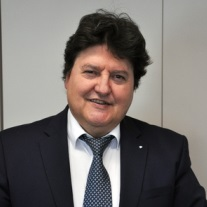3D-Bioprinting in Bioengineering
A special issue of Bioengineering (ISSN 2306-5354). This special issue belongs to the section "Regenerative Engineering".
Deadline for manuscript submissions: closed (31 August 2023) | Viewed by 9806
Special Issue Editors
Interests: microsurgery; flap surgery; hand surgery; reconstructive surgery; tissue engineering; biofabrication
Special Issues, Collections and Topics in MDPI journals
Interests: bioactive glasses; bioceramics; composite coatings; biofabrication; scaffolds; tissue engineering
Special Issues, Collections and Topics in MDPI journals
2. Biotechnology Centre, Silesian University of Technology, Krzywousteg 8, 44-100 Gliwice, Poland
Interests: hydrogels; bioprinting; melt electrowriting; hard–soft tissue interfaces; gradients
Special Issue Information
Dear Colleagues,
The latest advances and technical developments have made 3D bio-printing increasingly available to the scientific community, and hence popular for numerous biomedical applications. While pre-bioprinting (essentially a 3D modelling step) may include scaffold generation with various resin or filament fibers, the usage of biologicalmaterial alone or in combination with cells deserves the further development of appropriate functional bioinks. These combinations comprise a whole new field within bioengineering that aims to further develop and optimize the techniques of 3D bioprinting itself, and to generate and perfect bioinks based on specifically designed cell-laden hydrogels. The vision is to enable the simultaneous processing of biomaterials and cells to 3D-print structures of sufficient biochemical and structural complexity that resemble and/or feature tissue properties. Given its enormous possibilities, 3D bioprinting has the power to become a disruptive technique in biomedical engineering, and is thus attracting massive interest from researchers from different disciplines worldwide.
We cordially invite all colleagues and researchers in this fascinating field to contribute to the present Special Issue, and look forward to receiving your contributions.
Prof. Dr. Raymund E. Horch
Prof. Dr. Aldo R. Boccaccini
Dr. Małgorzata K. Włodarczyk-Biegun
Guest Editors
Manuscript Submission Information
Manuscripts should be submitted online at www.mdpi.com by registering and logging in to this website. Once you are registered, click here to go to the submission form. Manuscripts can be submitted until the deadline. All submissions that pass pre-check are peer-reviewed. Accepted papers will be published continuously in the journal (as soon as accepted) and will be listed together on the special issue website. Research articles, review articles as well as short communications are invited. For planned papers, a title and short abstract (about 100 words) can be sent to the Editorial Office for announcement on this website.
Submitted manuscripts should not have been published previously, nor be under consideration for publication elsewhere (except conference proceedings papers). All manuscripts are thoroughly refereed through a single-blind peer-review process. A guide for authors and other relevant information for submission of manuscripts is available on the Instructions for Authors page. Bioengineering is an international peer-reviewed open access monthly journal published by MDPI.
Please visit the Instructions for Authors page before submitting a manuscript. The Article Processing Charge (APC) for publication in this open access journal is 2700 CHF (Swiss Francs). Submitted papers should be well formatted and use good English. Authors may use MDPI's English editing service prior to publication or during author revisions.
Keywords
- biomimicry and printing of hierarchical or gradient structures for TE
- features and properties of bioinks
- biomaterials for 3D printing
- translational bioengineering and applications
- biomechatronics
- biomimetics
- biomedical imaging and medical information systems
- biological implants and regenerative medicine
- biomodeling and simulation
- vascularization of bioprinted items
- bioprinting and cancer research models
- cell–cell interactions for bioprinting
- 4D bioprinting
- functional bioinks
- new printing approaches
- merging different printing approaches








